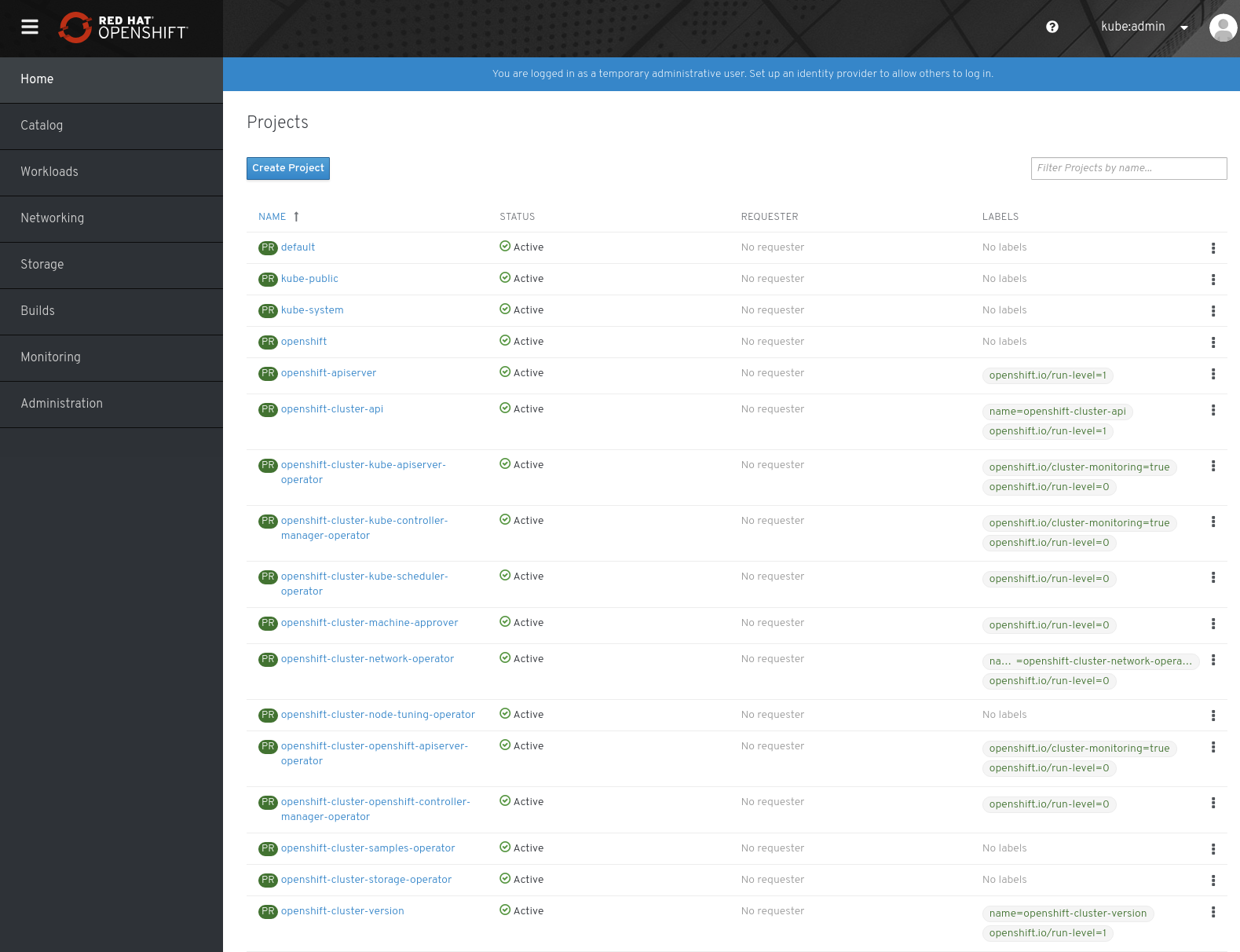github.com/openshift/installer@v1.4.17/docs/user/vsphere/install.md (about) 1 # Cluster Installation 2 3 At this point, you are ready to perform the OpenShift installation. You have two choices for installing your cluster on 4 vSphere, Installer-Provided Infrastructure (IPI) or User-Provided Infrastructure (UPI). See below for an example of an 5 IPI install. 6 7 To see a guided example of a UPI install, see [Install: User-Provided Infrastructure](install_upi.md) 8 9 ## Example: Installer-Provided Infrastructure (IPI) 10 11 The steps for performing an IPI-based install are outlined [here][cloud-install]. Following this guide you may begin at 12 the Download step. 13 14 ### Trust vCenter API 15 The installer requires access to the vCenter API. The vCenter's root CA certificates must be added to the system trust before connecting to the API. The certs can be downloaded from the vCenter's homepage: 16 17  18 19 In general, the certs are located at `<vCenter>/certs/download.zip`. Once downloaded and unzipped, the certs folder contains certs for Linux, MacOS, and Windows: 20 21 ```console 22 $ tree certs 23 certs 24 ├── lin 25 │ ├── 108f4d17.0 26 │ ├── 108f4d17.r1 27 │ ├── 7e757f6a.0 28 │ ├── 8e4f8471.0 29 │ └── 8e4f8471.r0 30 ├── mac 31 │ ├── 108f4d17.0 32 │ ├── 108f4d17.r1 33 │ ├── 7e757f6a.0 34 │ ├── 8e4f8471.0 35 │ └── 8e4f8471.r0 36 └── win 37 ├── 108f4d17.0.crt 38 ├── 108f4d17.r1.crl 39 ├── 7e757f6a.0.crt 40 ├── 8e4f8471.0.crt 41 └── 8e4f8471.r0.crl 42 43 3 directories, 15 files 44 ``` 45 46 Add the certs appropriate for your OS to your system trust. For Fedora: 47 48 ```console 49 sudo cp certs/lin/* /etc/pki/ca-trust/source/anchors 50 sudo update-ca-trust extract 51 ``` 52 ### Create Configuration 53 54 ```console 55 $ openshift-install create install-config 56 ? SSH Public Key /home/user_id/.ssh/id_rsa.pub 57 ? Platform vsphere 58 ? vCenter vcsa.vmware.devcluster.openshift.com 59 ? Username user@e2e.local 60 ? Password [? for help] ******************** 61 INFO Connecting to vCenter vcsa.vmware.devcluster.openshift.com 62 ? Datacenter example-datacenter 63 ? Cluster example-cluster 64 ? Default Datastore example-datastore 65 ? Network example-network 66 ? Virtual IP Address for API 123.123.12.1 67 ? Virtual IP Address for Ingress 123.123.12.2 68 ? Base Domain example.com 69 ? Cluster Name mycluster 70 ? Pull Secret [? for help] ********************************************************** 71 ``` 72 73 ### Create Cluster 74 75 ```console 76 $ openshift-install create cluster 77 INFO Consuming Install Config from target directory 78 INFO Creating infrastructure resources... 79 INFO Waiting up to 30m0s for the Kubernetes API at https://api.mycluster.example.com:6443... 80 INFO API v1.18.2 up 81 INFO Waiting up to 30m0s for bootstrapping to complete... 82 INFO Destroying the bootstrap resources... 83 INFO Waiting up to 30m0s for the cluster at https://api.mycluster.example.com:6443 to initialize... 84 INFO Waiting up to 10m0s for the openshift-console route to be created... 85 INFO Install complete! 86 INFO To access the cluster as the system:admin user when using 'oc', run 87 export KUBECONFIG=/home/user/auth/kubeconfig 88 INFO Access the OpenShift web-console here: https://console-openshift-console.apps.mycluster.example.com 89 INFO Login to the console with user: kubeadmin, password: 5char-5char-5char-5char 90 ``` 91 92 ### Running Cluster 93 94 There will be six running VM instances and a template in the Folder used for installation. 95 96 97 The nodes within the Virtual Network utilize internal DNS to access the API. External/Internet 98 access to the cluster uses an Haproxy load balancer for the provided virtual IPs. 99 100 The OpenShift console is available via the kubeadmin login provided by the installer. 101 102  103 104 [cloud-install]: https://console.redhat.com/openshift/create